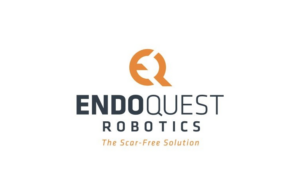 EndoQuest Robotics today announced its Endoluminal Surgical (ELS) system won the best application award in the 2022 Surgical Robotic Challenge.
EndoQuest Robotics today announced its Endoluminal Surgical (ELS) system won the best application award in the 2022 Surgical Robotic Challenge.
The Surgical Robotic Challenge is an international competition for healthcare robotics groups to showcase new and innovative ideas across a range of surgical robot platforms. It is presented at the Hamlyn Symposium on Medical Robotics and is sponsored by major surgical robotics companies, including Intuitive, Auris and Smith + Nephew.
EndoQuest’s advanced robotic platform allows endoscopists and surgeons to perform end-luminal surgeries through existing lumens on the body. It eliminates the need for incisions that can lead to visible scarring. The ELS System uses the flexibility of conventional endoscopy and traditional surgical techniques that help improve control and precision during a procedure.
The system’s endoscope is a flexible and steerable overture that functions as a robotic delivery system that delivers two surgical instruments and a flexible videoscope to a surgical target. It allows endoscopists to access locations in the digestive tract through a natural orifice using traditional surgical techniques.
“The Surgical Robotic Challenge is one of the most prestigious honors that can be earned in robotics technology and this award represents a new level of interest and validation in our innovative ELS technology,” CEO Kurt Azarbarzin said in a news release. “This recognition and honor is a reflection of the outstanding work of our team and brings new levels of momentum to our plans to advance this technology to an IDE application with the U.S. Food and Drug Administration.”
EndoQuest won the award based on a review of the use of the ELS system in ex vivo tissue models where they assessed basic functionality and technical feasibility of colonic lesion resection. Results showed that the ELS system functioned in a tortuous configuration with stable, smooth and predictable movement of the flexible instrument end effectors. Accessories were about to be efficiently exchanged without repositioning or interrupting of the procedure. EndoQuest also found that tissue resection was possible in preclinical models, including simulated lesions in bovine colon.
“This achievement highlights the potential for EndoQuest’s ELS system to allow for much broader adoption of endoluminal tissue resection techniques, ultimately enabling less invasive and scar-free endoluminal surgery to become more widely available to patients,” Azarbarzin said. “There is also clear potential to expand the applications of this technology further in endoscopic surgery in the years ahead.”
The ELS System is still under development and has not been cleared by the FDA.

